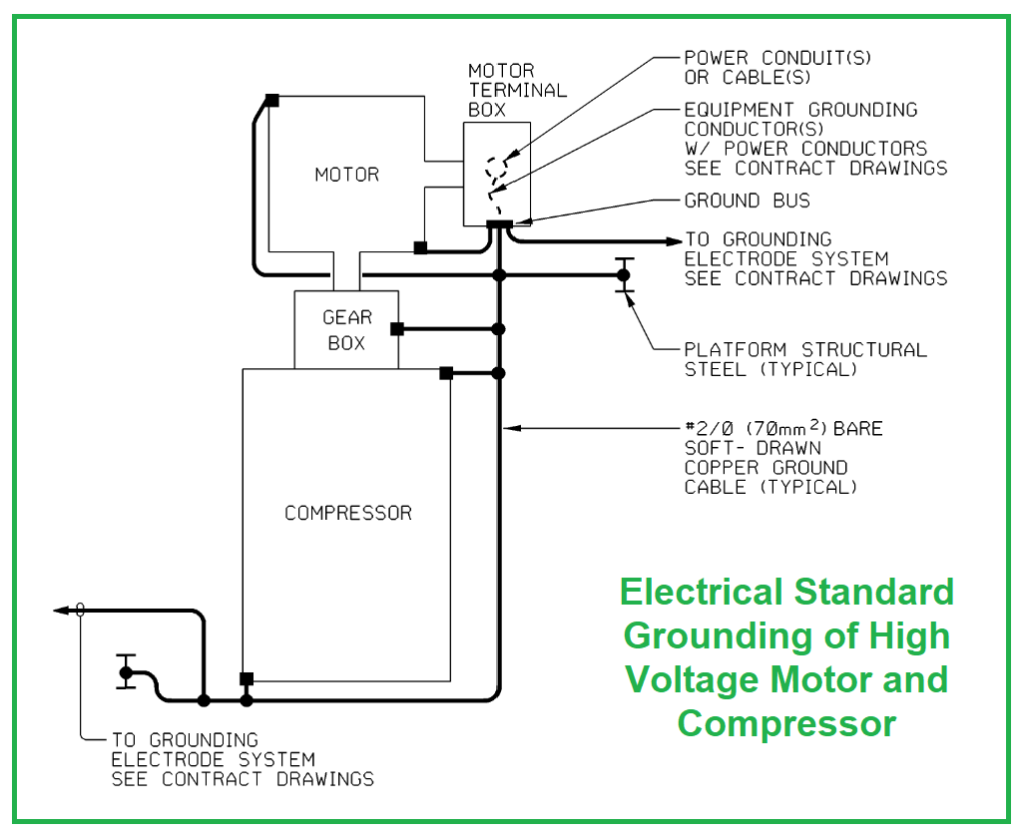
Electrical standard grounding of high-voltage motors and compressors is a critical safety practice in electrical engineering and power systems. Proper grounding is essential to protect personnel, equipment, and facilities from electrical faults and to ensure the efficient operation of electrical systems. Here is an overview of the electrical standard grounding practices for high-voltage motors and compressors:
Electrical Standard Grounding of High Voltage Motor and Compressor
1. Grounding Electrodes:
- Grounding typically starts with the installation of grounding electrodes, such as ground rods or plates, securely driven into the earth near the motor and compressor locations.
- These electrodes provide a low-resistance path to dissipate electrical faults safely into the ground.
2. Equipment Grounding:
- All high-voltage motors and compressors should be equipped with grounding conductors that connect the equipment to the grounding electrode system.
- These conductors serve as a fault path for electrical current in case of equipment malfunction, ensuring that fault current is safely directed to the ground.
3. Grounding Conductors:
- Grounding conductors should be appropriately sized based on the motor or compressor’s rated current and the applicable electrical codes and standards.
- The conductors should be made of suitable materials that can withstand environmental conditions.
4. Bonding:
- Bonding ensures that all metal parts of the motor, compressor, and associated equipment are electrically interconnected to prevent voltage differences and minimize the risk of electrical shock.
- Proper bonding can be achieved through the use of bonding jumpers or conductors.
5. Ground Fault Protection:
- High-voltage motors and compressors often incorporate ground fault protection devices, such as ground fault relays, to detect and respond to ground faults promptly.
- These devices can trip the circuit and isolate the faulted equipment, preventing electrical hazards.
6. Regular Inspection and Maintenance:
- Grounding systems should be inspected regularly to ensure their integrity and effectiveness.
- Any damage or corrosion to grounding electrodes, conductors, or bonding connections should be promptly repaired.
7. Compliance with Codes and Standards:
- High-voltage motor and compressor grounding practices should comply with local electrical codes, national standards, and industry-specific guidelines.
8. Documentation:
- Proper documentation of grounding systems, including diagrams and records of inspections and maintenance, should be maintained for reference and compliance purposes.
9. Safety Training:
- Personnel working with high-voltage motors and compressors should receive proper training on electrical safety, grounding procedures, and emergency response in case of electrical faults.
Compliance with electrical standard grounding practices is essential to mitigate the risks associated with high-voltage electrical systems, protect personnel, and ensure the reliable and safe operation of motors and compressors.